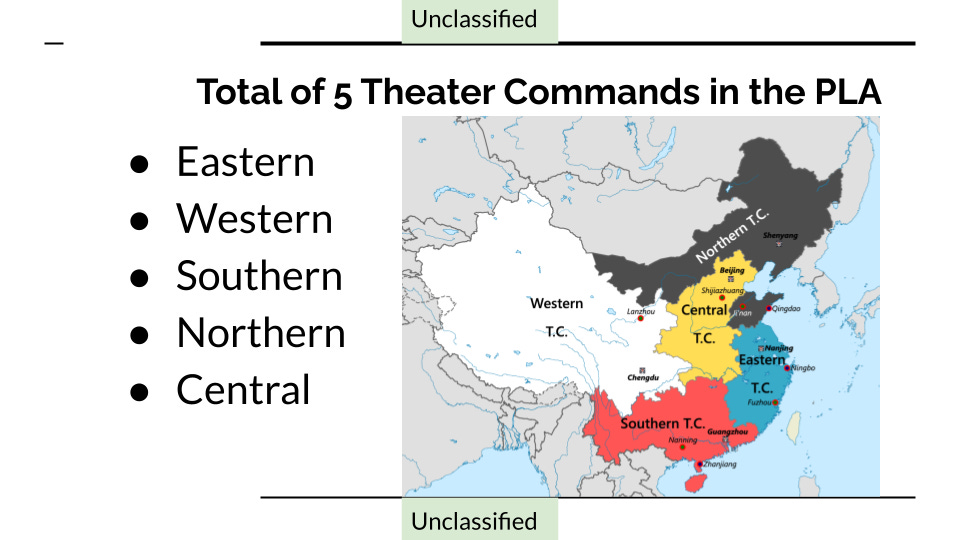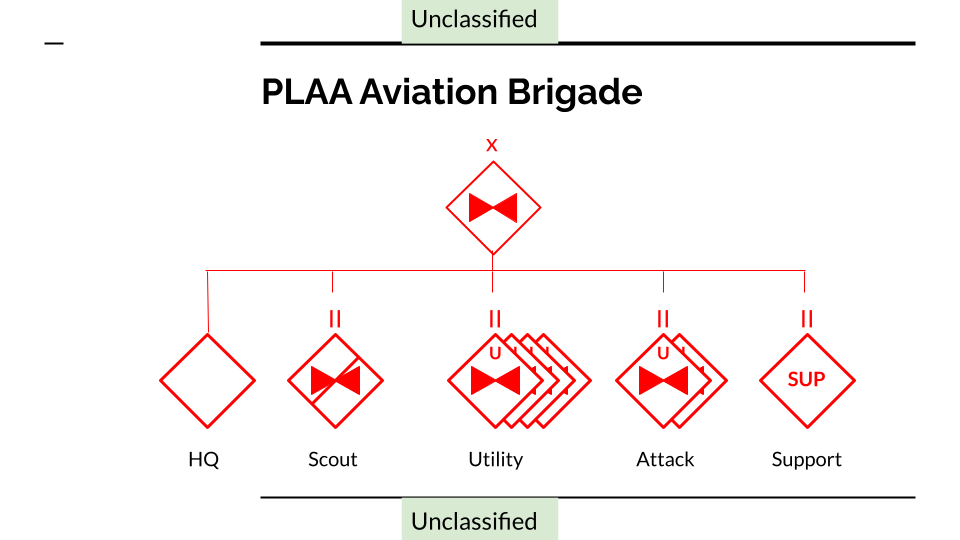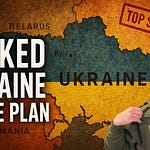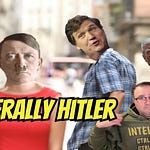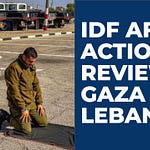Introduction
It is increasingly likely that the United States could find itself in conflict with the People’s Republic of China by 2027 or 2028. If you wear the uniform—be it Army, Navy, Air Force, Marine Corps, or Space Force—this looming confrontation may affect you directly.
Paid members get access to the PDF Cheat Sheet and my classroom presentation below:
Free members can watch the full video on YouTube below:
This article provides an overview of the People’s Liberation Army (PLA) ground forces, sometimes referred to as the People’s Liberation Army Army (PLAA) or the People’s Liberation Army Ground Force (PLAGF). Understanding the terminology, structure, and history of your potential adversary is crucial for preparing to counter them effectively.
Terminology: PLA, PLAA, and PLAGF
PLA (People’s Liberation Army): This is China’s overall military, encompassing every branch—Army, Navy, Air Force, Rocket Force, and Strategic Support Force.
PLAA (People’s Liberation Army Army): This is the land force branch of the PLA—the “Army” component. It’s the term most often used among official PLA circles and in scholarly work.
PLAGF (People’s Liberation Army Ground Force): A term sometimes used in Western defense and intelligence circles to emphasize the ground warfare element of the PLA.
For simplicity’s sake, I use PLAA throughout this article to mean the Army (i.e., the ground force) branch of the PLA.
A (Very) Brief History of the PLA
The People’s Liberation Army traces its origins back to the Chinese Civil War (1927–1949):
1927 – The Nanchang Uprising: Often cited as the PLA’s founding moment (originally called the Red Army at this time). The date of this uprising (August 1) appears on the PLA’s war flag.
1937–1945 – Second Sino-Japanese War: The Red Army formed a nominal alliance with the Nationalists to fight Imperial Japan, primarily using guerrilla tactics.
1949 – People’s Republic of China (PRC) Founded: After defeating the Nationalists, the Communist forces restructured the Red Army into the PLA.
1950s–1960s – Conflicts and Crises: The PLA engaged in the First and Second Taiwan Strait Crises, the Sino-Indian War, and the Sino-Soviet Border Conflict.
1979 – Sino-Vietnamese War: A short but intense conflict that exposed serious deficiencies in the PLA’s training, equipment, and doctrine. This led to further modernization drives.
1990s – Gulf War Lessons: China observed how the U.S. overwhelmed Iraqi forces, prompting the PLA’s increased focus on high-tech weaponry, joint operations, and professionalization.
2015 and Onward – Ongoing Reforms: The PLA continuously modernizes its doctrine, structure, and equipment to prepare for future high-tech conflicts.
PLAA Order of Battle (ORBAT)
Order of Battle (ORBAT) describes how a military organizes its units, formations, and equipment. The PLAA’s hierarchy flows from the top-level Central Military Commission (CMC) down to brigades and battalions.
Central Military Commission (CMC)
The supreme military authority in China, overseeing all aspects of the PLA.
Directly controlled by the Chinese Communist Party (CCP), making the PLA effectively the party’s army—not a purely national force.
Chaired by China’s top leader, Xi Jinping.
Theater Commands (TCs)
China is divided into five Theater Commands (TCs), each responsible for a specific strategic region:
Eastern TC (Nanjing): Focused on Taiwan and the East China Sea.
Southern TC (Guangzhou): Oversees the South China Sea, Southeast Asia border security, and maritime disputes.
Western TC (Chengdu): Concentrates on India borders, Xinjiang, Tibet, and “counterterrorism” missions.
Northern TC (Shenyang): Monitors North Korea, Mongolia, and Russia.
Central TC (Beijing): Defends the capital region and serves as a strategic reserve.
Group Armies (GAs)
The PLAA consists of 13 Group Armies, each tied to one of the five Theater Commands.
Each Group Army includes roughly 45,000–60,000 personnel, similar in scale to a U.S. Army Corps.
Combined-Arms Brigades
Each Group Army includes around 6 Combined-Arms Brigades (CABs) (about 30,000 troops total) and additional support brigades.
Overall, the PLAA fields ~79 Combined-Arms Brigades—each with around 5,000 personnel.
These brigades draw inspiration from U.S. Army Brigade Combat Teams, focusing on multi-domain cooperation at the brigade level.
Types of Combined-Arms Brigades:
Heavy (Armored): ~25 brigades with 800–1,200 personnel per battalion.
Medium (Mechanized): ~30 brigades with 700–1,000 personnel per battalion.
Light (Motorized): ~23 brigades with 600–800 personnel per battalion.
Within each brigade:
4 Combined-Arms Battalions are the principal fighting units.
Each battalion has 3–4 maneuver companies plus support elements like artillery, recon, air defense, and logistics.
PLAA Army Aviation
Army-Aviation Brigades provide rotary-wing support, modeled largely on U.S. Army Combat Aviation Brigades but with fewer aircraft:
Each of the 13 Group Armies typically has an Army-Aviation Brigade (except two that host Air Assault Brigades instead).
A standard Army-Aviation Brigade has:
4 General-Utility (Transport) Battalions (8–12 medium-lift helicopters each)
2 Attack-Helicopter Battalions (8 attack helicopters each)
1 Reconnaissance Battalion (8 recon/light-attack helicopters)
1 Headquarters & Support Battalion
Air-Assault Brigades (in the 83rd and 75th GAs) contain infantry battalions alongside medium-lift helicopter battalions to enable rapid deployment.
Support Brigades
The PLAA leans heavily on specialized brigades to ensure it can sustain prolonged, high-intensity operations:
Artillery Brigades: Self-propelled howitzers, multiple rocket launchers (MRLs).
Air Defense Brigades: Short-range air defense (SHORAD), self-propelled anti-aircraft guns (SPAAGs), and SAM systems.
Special Operations Brigades: Infiltration, airborne assault, direct-action missions.
Engineering & Chemical Defense Brigades: Combat engineering, CBRN protection.
Service Support Brigades: Logistics, medical, transport, maintenance, and electronic warfare capabilities.
The PLAA Infantry Squad
For most on-the-ground encounters, you’ll deal with infantry squads. Each Combined-Arms Battalion generally fields three infantry companies, each company has three platoons, and each platoon has three squads.
Squad Size: 8–10 soldiers
Roles:
Squad Leader: Command and fire coordination
Riflemen: 3–5 personnel with QBZ-95 or QBZ-191 rifles
Automatic Rifle/SAW Gunners: 1–2 individuals with QBB-95 LSW or similar
Anti-Tank Specialists: 1–2 carrying PF-89 RPGs or HJ-12 ATGMs
Grenadier: Usually one soldier, armed with QLU-11 (35 mm grenade launcher)
Designated Marksman (DMR): Possible extra role, equipped with QBU-88 DMR
The specific composition varies by brigade type (motorized, mechanized, or armored). Regardless, PLAA squads emphasize flexible, layered firepower—often with man-portable air-defense systems (MANPADS) integral to their doctrine of area denial and system warfare.
Brigade-Level Capabilities & Equipment
PLAA Combined-Arms Brigades are structured for:
High-Intensity Warfare: Tanks, IFVs, and artillery.
Long-Range Strikes: Guided missiles, MLRS.
Electronic Warfare & UAV Recon: Digital battle networks, jamming, and drone recon.
Rapid Deployment: Ability to maneuver in diverse terrains (including amphibious capabilities).
Air Defense: Denial of adversary air superiority via SPAAGs, SAMs, MANPADS.
Integrated Logistics: Sustained combat through robust transport, resupply, and maintenance units.
Recruitment, Terms of Service, and Training
The PLAA’s modernization drive isn’t limited to equipment and organizational structure; it also extends to its personnel policies.
Conscription & Voluntary Service
Officially, all enlisted personnel are conscripts. However, many volunteer, receiving incentives for longer service terms.
Conscription occurs twice a year (spring and fall) to maintain readiness and cycle recruits through training phases.
Precision Recruitment
Big data and social media are used to target individuals with specific skill sets (e.g., STEM degrees).
Training
New conscripts: ~3 months basic training (military fundamentals, political indoctrination, physical fitness).
Advanced training: Joint exercises, force-on-force drills, and realistic combat simulations.
“Blue forces” (i.e., adversary role players) are used to challenge PLAA units with more realistic opposition tactics.
Compensation & Career Progression
Conscripts serve for two years. NCOs have structured career paths and better pay.
Reservists receive financial incentives, plus guaranteed reemployment rights.
Despite ongoing reforms, training quality can vary widely—elite units often have superior equipment and more robust training resources than lower-tier units.
Conclusion
The People’s Liberation Army Army (PLAA) is rapidly modernizing and learning from global conflicts. In the event of a near-peer conflict—particularly over Taiwan, the South China Sea, or other strategic flashpoints—American and allied forces could find themselves matched against a well-organized, well-equipped, and determined adversary.
Understanding the PLAA’s order of battle, from its highest command structures down to the capabilities of individual infantry squads, provides a crucial edge in planning and preparation. As the geopolitical landscape continues shifting, awareness of how the PLAA operates is critical for anyone who may face them on—or above—the battlefield.
PDF Cheat sheet and PowerPoint below:





